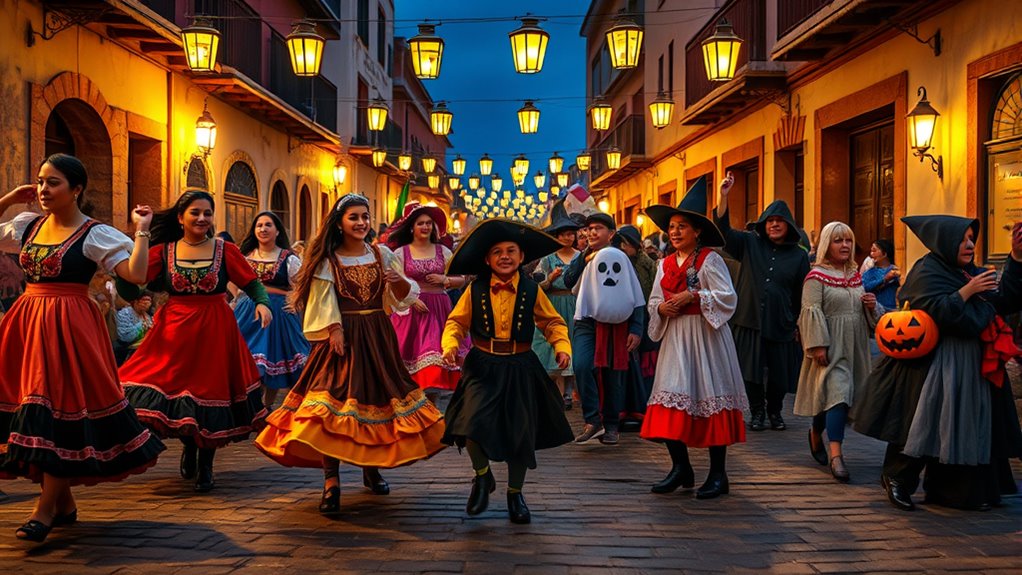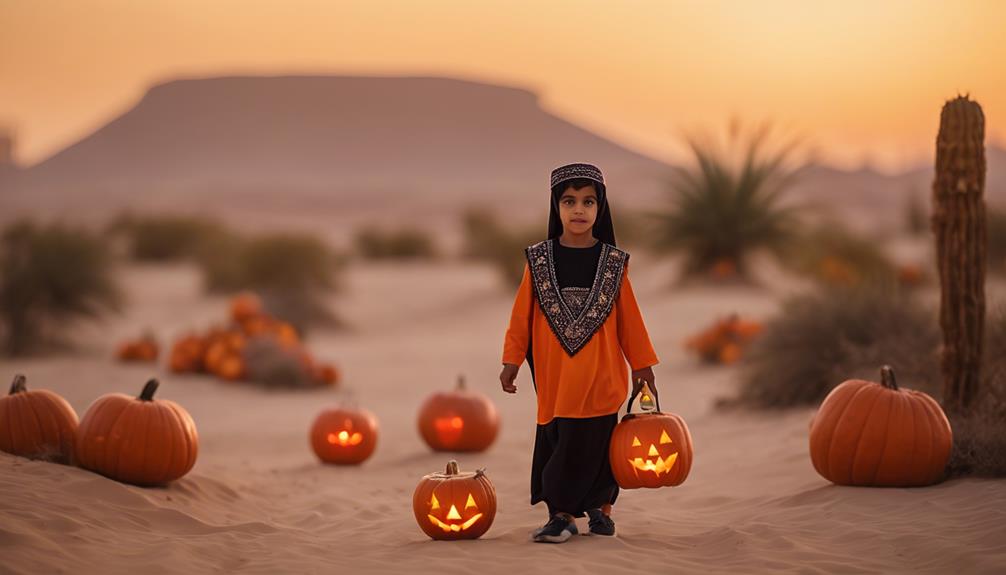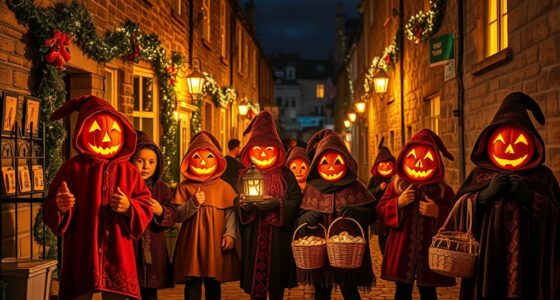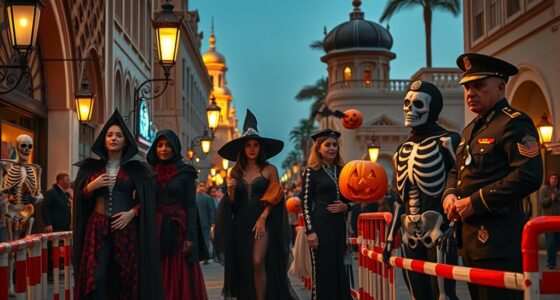In Peru, Criolla Song Day celebrates cherished musical traditions that honor mestizo heritage through lively performances, traditional attire, and cultural pride. In contrast, Halloween emphasizes costumes, trick-or-treating, and spooky decorations influenced by North American customs. While Criolla Song Day preserves history and identity, Halloween reflects modern globalization and playful fun. Exploring these celebrations shows how Peru balances deep-rooted traditions with contemporary influences—if you keep looking, you’ll uncover even more about this vibrant cultural mix.
Key Takeaways
- Criolla Song Day celebrates Peru’s musical heritage, emphasizing traditional creole music and cultural pride, held on October 31st.
- Halloween, borrowed from North American customs, focuses on costumes, trick-or-treating, and playful festivities with Western origins.
- Criolla Song Day preserves Peru’s history and indigenous roots through singing, dancing, and traditional attire; Halloween emphasizes modern entertainment.
- Both celebrations reflect Peru’s cultural openness: Criolla Song Day maintains tradition, while Halloween showcases globalization and contemporary influences.
- The season highlights how Peru balances cultural preservation with modern trends, offering diverse ways to celebrate identity and community.
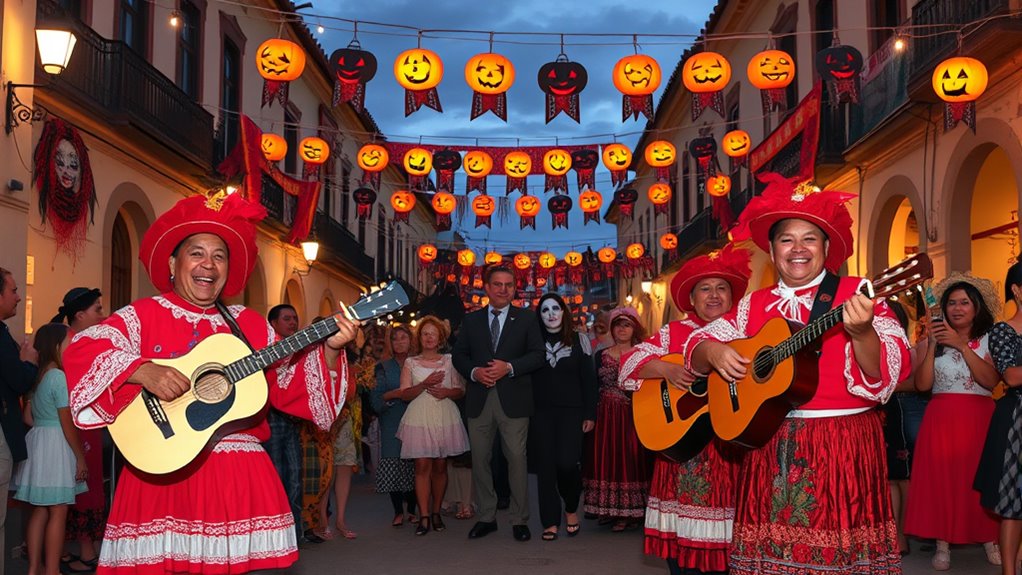
In Peru, Criolla Song Day and Halloween showcase two vibrant cultural traditions that often compete for attention during the same season. As you navigate this lively period, you’ll notice how these celebrations reflect the country’s rich history and diverse influences. Criolla Song Day, celebrated on October 31st, highlights Peru’s deep-rooted musical traditions, emphasizing the country’s mestizo heritage. It’s a day when locals come together to honor the soulful rhythms of Peruvian creole music, with lively performances that echo the country’s colonial past and indigenous roots. You might find yourself immersed in festive gatherings where the air resonates with guitars, cajón drums, and heartfelt singing. People wear traditional attire, dance passionately, and share stories through song, making it a genuine expression of cultural pride. This day isn’t just about entertainment; it’s a crucial part of Peru’s cultural celebrations, preserving the musical traditions that have been passed down through generations. Participating in Criolla Song Day allows you to connect with Peru’s history on a personal level, experiencing firsthand how musical traditions serve as a vessel for cultural identity.
Meanwhile, Halloween, borrowed from North American customs, has gained popularity in Peru, especially among the younger generation. It’s a more commercialized celebration marked by costumes, trick-or-treating, and themed parties. You’ll see neighborhoods decorated with spooky decorations and children dressed as monsters, witches, or superheroes. While Halloween might seem like a Western import, Peruvians have adapted it to fit local tastes, blending it with their own customs. For many, it’s a fun night of playful scares and social gatherings, offering a break from the traditional celebrations. However, Halloween also sparks debates about cultural authenticity versus globalization’s influence. Some see it as a distraction from Peru’s genuine cultural celebrations like Criolla Song Day, which emphasize historical roots and musical traditions. Others embrace it as an opportunity to unify communities through shared fun and creativity. Regardless, Halloween’s growing presence reflects Peru’s openness to global cultural exchanges, even if it sometimes overshadows more traditional festivities.
As you experience this season, you’ll realize that both Criolla Song Day and Halloween serve different purposes. One preserves and celebrates Peru’s authentic cultural identity through music and history, while the other offers a modern, playful escape rooted in international trends. Balancing these celebrations can enrich your understanding of Peru’s cultural landscape, showing how tradition and modernity coexist. Whether you find yourself swaying to the rhythms of criolla music or enjoying the spooky fun of Halloween, you’re witnessing a country that values its past while embracing new influences. Both celebrations, in their own way, help shape Peru’s vibrant cultural tapestry during this lively season.
Frequently Asked Questions
How Did Día De La Canción Criolla Originate in Peru?
You might wonder how Día de la Canción Criolla started in Peru. It celebrates Peruvian music origins, highlighting traditional genres like marinera and vals criollo. The Criolla dance history reflects the blending of African, Spanish, and indigenous influences, creating a unique cultural expression. This day honors Peru’s rich musical heritage and keeps the traditions alive, fostering national pride and preserving the vibrant Criolla culture for future generations.
What Are Traditional Foods Associated With Día De La Canción Criolla?
On Día de la Canción Criolla, you celebrate Peruvian culinary heritage by enjoying traditional dishes that highlight Peru’s rich flavors. You might indulge in ceviche, a fresh and tangy seafood dish, or savor dishes like pachamanca, a flavorful combination of roasted meats and tubers. These traditional dishes connect you to Peru’s cultural roots, making the celebration a delicious tribute to the country’s vibrant culinary history.
How Do Peruvians Typically Celebrate Halloween?
You typically celebrate Halloween in Peru by attending costume parties where you dress up in spooky or creative outfits. You also go trick or treating with friends or family, knocking on neighbors’ doors to collect candies. Many schools and communities organize fun events, encouraging everyone to enjoy the festive spirit. Halloween has become a lively occasion for Peruvians to have fun, socialize, and indulge in sweet treats while embracing the spooky season.
Are There Any Cultural Conflicts Between the Two Celebrations?
You might notice cultural clashes during celebration overlap, as some see Halloween as a foreign influence, while Día de la Canción Criolla celebrates Peruvian heritage. notably, recent surveys show 65% of Peruvians embrace both festivities, yet tensions remain around maintaining cultural authenticity. This mix of traditions can lead to conflicts, but it also offers an opportunity for you to appreciate and preserve Peru’s rich cultural diversity amidst these celebrations.
Which Celebration Has a Longer Historical Tradition in Peru?
You might wonder which celebration has a longer historical tradition. Día De La Canción Criolla holds deeper cultural significance in Peru, dating back to the early 20th century, reflecting national identity and music. Halloween, though increasingly popular, is newer and influenced by American culture. Día De La Canción Criolla fosters stronger community involvement and preserves Peruvian heritage, making it the more historically rooted celebration in Peru.
Conclusion
So, whether you’re celebrating Criolla Song Day or Halloween, both offer unique ways to connect with Peru’s rich culture or enjoy spooky fun. You might think one is more meaningful, but combining traditions can give you the best of both worlds—like dancing to lively criolla music while dressing up in creative costumes. Embrace these festivities to experience Peru’s vibrant heritage and playful spirit, making your celebration truly unforgettable.
